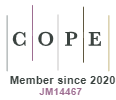A Methodology for Determination of Sustainable Arenas Based on set Covering Problems
DOI:
https://doi.org/10.5585/geas.v5i2.375Keywords:
Set Covering Problem, Sustainability, Football Stadiums.Abstract
Currently the choice of stadiums/arenas for events should be made so that economic and sustainable aspects are taken into account. In this context, this paper proposes a methodology for choosing stadiums/arenas based on Set Covering Problem (SCP) from the Operational Research Area. This methodology allows to select those stadiums/arenas that have the lowest cost and gather the largest possible number of measures aimed at environmental sustainability of civil construction. Through a practical application, with the help of the CPLEX 12.2 software, it was sought to present the steps of the methodology that considers the mathematical model of the SCP in its structure. The results show that the proposed methodology is able to select stadiums/arenas geared towards more sustainable mega sports events.Downloads
Downloads
Published
2016-07-22
How to Cite
Tóffano, R., Nazareth, V. S., Ribeiro, G. M., & de Jesus, J. M. H. (2016). A Methodology for Determination of Sustainable Arenas Based on set Covering Problems. Revista De Gestão Ambiental E Sustentabilidade, 5(2), 49–63. https://doi.org/10.5585/geas.v5i2.375
Issue
Section
Artigos
Views
- Abstract 113
- PDF (Português (Brasil)) 83












